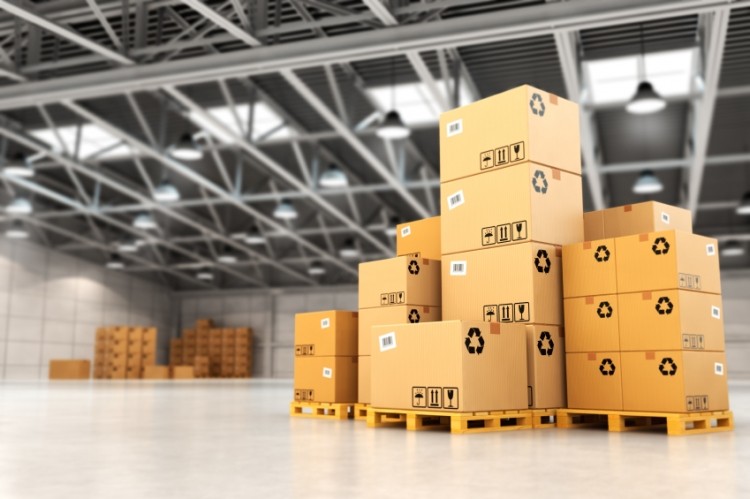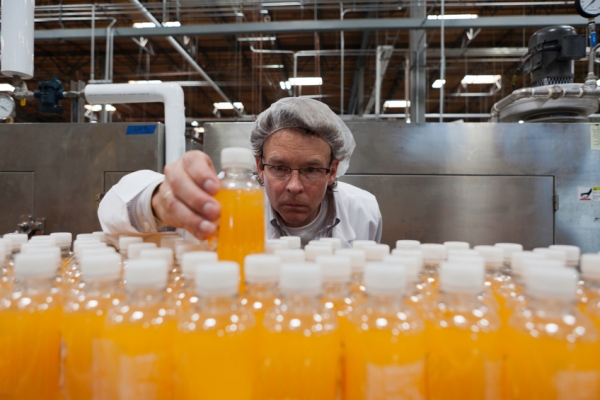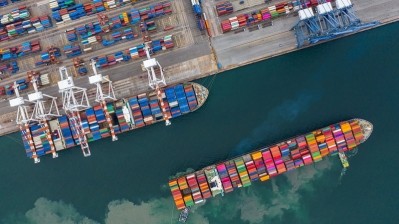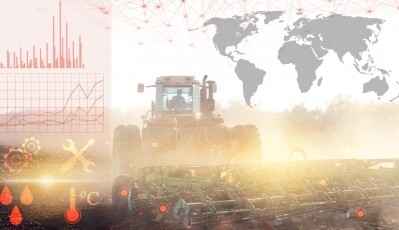Coronavirus supply chain management: Lessons from China

The food supply chain in Europe is coming under increasing pressure. On the one hand, manufacturers and retailers are struggling to meet a sudden jump in demand. On the other, they may face new transport and distribution restrictions designed to stop the spread of the disease. While the European Commission has introduced measures, such as dedicated lanes, designed to keep good flowing between member states, food industry associations have reported delays at the boarder that impact fresh foods in particular. Labour shortages and forced factory shutdowns should be expected.
According to Bo Zhou, chief executive of AI planning software provider FuturMaster, ‘many’ of the company’s clients in Europe are ‘worried about the impact on their supply chains’. The company counts the likes of Warburtons, Haribo, Bonduelle and Yoplait among its European customer base.
Covid-19: Prepare with forecasting and simulations
FuturMaster has operations in China, where ‘huge’ disruption was caused to businesses after the onset of the coronavirus crisis. Official data shows Chinese exports in January and February were down 17.2% year-on-year. For one of FuturMaster’s beverage customers saw February sales plunge a massive 80%.
According to the tech company, there is still a ‘lot of trepidation’ around consumer demand – not least because new confirmed local transmission has started again after the full lockdown put a pause on the spread of the disease. The World Health Organization’s latest status report reveals 103 new cases were confirmed in the country, all due to local transmission, on 23 March.
What are the key demand trends that FuturMaster has witnessed? Short-term demand from end-consumers has fallen sharply. Due to so many people being quarantined at home, the geographical distribution of demand has also changed. A lot of demand has shifted online.
Understanding how demand is likely to evolve will be crucial if the food industry in Europe is going to meet the needs of citizens, Zhou believes.
“During times of such uncertainty, every company needs to make simulations on how demand may evolve and if and how they can satisfy this demand based on their production and warehouse capacity.
“You also need to closely monitor which transportation routes are cut, or how many workers will be unable to show up at various sites due to lockdown. For many companies in China, the problems were compounded because they don’t have the technologies to support these simulations; so they were unable to anticipate demand and supply by looking at multiple scenarios,” Zhou noted.
Grappling with food shortages and empty shelves
Panic buying – where many European supermarkets have worked to empty shelves due to stock-piling – is likely to test suppliers ‘to the limit’. But spikes in demand are not the only problem food makers in Europe will face.

According to Zhou, sourcing materials may not be the biggest problem on the supply side. Companies will also have to contend with reduced production and warehousing capacities due to labour shortages. When one worker tests positive, the whole team has to be put into quarantine.
Moving products around can turn out to be an issue as well, especially when transportation routes are affected due to border closures. This has clearly been an issue in China. According to a recent McKinsey report, trucking capacity to ship goods from factories to ports is operating at around 60-80% of normal capacity in the country. This has resulted in goods facing delays of around 8-10 days.
“During the crisis, companies need to produce more with reduced resources. This is made possible by optimising the production by reducing set-up times. Manufacturers also need to produce more efficiently: having updated demand planning data allows you to produce only what is most in demand and profitable,” Zhou said.
“Anticipating ahead - by doing simulations - enables companies to be better prepared. Being able to react in an agile and efficient way is vital for coping with any crisis situations.”
FuturMaster case study: A ‘major’ bottled water supplier in China
China consumes more bottled water than anywhere else in the world: around 25 billion gallons a year, according to the IBWA trade association, which accounts for more than a quarter of the world’s volume.
One of the largest suppliers of bottled water to China – which did not want to be named - has been able to avoid ‘severe’ stock shortages using FuturMaster’s ‘sophisticated’ supply chain planning technology to help anticipate and respond quickly to the emergency, the tech group revealed.
The water company has ‘numerous factories’ it can leverage to adjust capacity based on forecasting of demand and market supply. It was also able to determine which products should be prioritised by taking into account stock on hand in each warehouse and available production and distribution capacities.
The timing of the crisis was interesting. Most factories in China were already scheduled to close for a week over the Chinese New Year. At this time, coronavirus cases were threatening to bring Wuhan (where the Covid-19 virus outbreak started) to a standstill. A team of planners at the water supplier were already gearing up and preparing for various possible closures as news of new lockdowns spread. So it looked at the areas likely to be most affected and where else it could produce, and at what capacity.
Using FuturMaster’s system to make an updated plan for the supply network, the supply chain team tracked traffic restrictions and collected information from local managers to understand labour force trends. “It ran simulation after simulation. It came up with a plan A, B, C, and so on. This foresight and planning meant that it was less likely to be taken by surprise and resulted in continued supplies to almost everywhere.”
FuturMaster’s AI allowed large amounts of data to be collected and interpreted, Zhou explained. Modelling different scenarios allows the company to come up with solutions – for instance, shifting production capacity to different locations to cope with factory closures and transportation disruptions.
Importantly, this was achieved at speed.
“In times of extreme uncertainty and volatility in demand, digital technology can certainly make sense of a multitude of data, quickly and optimally. This requires a supply chain planning tool that’s highly flexible and data-driven. Ideally, you need to be able to manage as many variables as possible to get more accurate forecasts on demand and optimise the supply accordingly. It’s something that would normally take days to do manually. And a machine is often much better than humans at crunching numbers and making decisions from wades of information.”
Managing disruption and re-thinking logistics
Zhou does not downplay the level of disruption coronavirus will bring to food and other businesses in Europe. “Everything that seems normal everyday becomes totally impossible,” he stressed.
“For many businesses, you might need to find another logistics network. You have to focus on where’s the best factory that you can produce in and look closely at costs and feasibility. All the normal variables that supply chain planners use on an everyday basis become uncertain and questionable. But you can act with foresight to mitigate risk.
“In times of panic - and against a backdrop of empty shelves - some digital technology can be used to avoid a crisis. Digital technology can help make better decisions afterwards and prioritise things whenever there’s a choice to be made,” added Zhou.



















